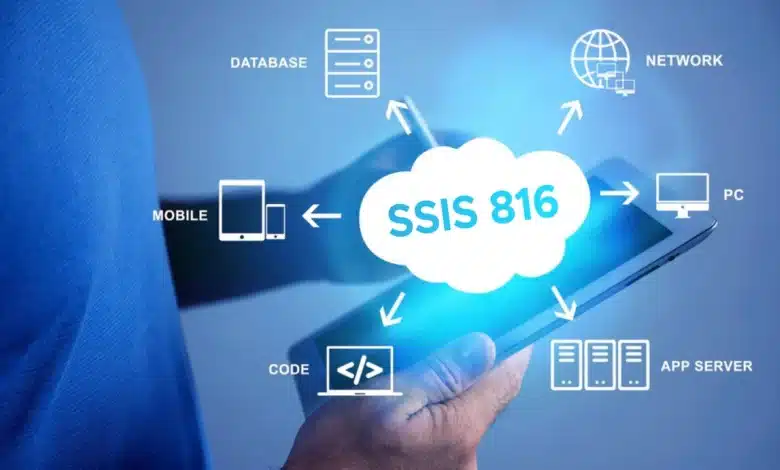SQL Server Integration Services (SSIS) has long been a trusted tool for extracting, transforming, and loading (ETL) data from various sources into a consolidated repository. Professionals in the data field often executed SSIS packages on a single server, which could pose challenges when dealing with large datasets. However, with the introduction of SSIS Scale Out, also known as SSIS 816, alongside the release of SQL Server 2016, a groundbreaking feature has emerged, transforming the landscape of ETL processes and offering an efficient and scalable solution for high-volume data processing.
Overview of SSIS 816
SSIS 816 signifies a significant advancement in the capabilities of SQL Server Integration Services. In the past, the execution of SSIS packages was confined to a single server, creating difficulties in managing substantial data loads. SSIS 816 addresses this challenge by introducing the concept of scaling out, distributing the execution load across multiple servers.
The primary objective of SSIS 816 is to enhance the efficiency, throughput, and resilience of ETL processes. By leveraging multiple machines, data professionals can significantly improve workflow efficiency, resulting in faster and more reliable data integration.
Features of SSIS 816
- Distributed Execution: The key feature of SSIS 816 lies in its ability to distribute the execution of SSIS packages across multiple servers. This distribution enables parallel processing of tasks, leading to improved performance for large-volume ETL operations.
- Centralized Management: While the execution is distributed, SSIS 816 provides a centralized management interface. Administrators can seamlessly control, monitor, and troubleshoot the entire SSIS Scale Out system from a single central source, simplifying the management of scale-out ETL processes.
- Improved Fault Tolerance: SSIS 816 enhances fault tolerance by minimizing the impact of server failures. Unlike a typical single-server configuration where a server malfunction could disrupt an entire ETL process, SSIS 816’s distributed load makes the system more resilient to such failures.
- Increased Throughput: Due to its distributive nature, SSIS 816 significantly enhances the efficiency of ETL processes. Tasks traditionally performed sequentially on one server are now executed concurrently across multiple servers, resulting in accelerated data integration.
Benefits of SSIS 816
- Scalability: A key advantage of SSIS 816 is its scalability. Organizations dealing with growing data volumes can easily scale their IT infrastructures by adding additional servers to their SSIS Scale Out configuration, ensuring that ETL processes can handle increasing workloads without sacrificing performance.
- Performance Optimization: By distributing the execution of SSIS applications, SSIS 816 optimizes performance for data-intensive operations. Whether collecting data from diverse sources or transforming data into structured formats, the parallel processing capabilities of SSIS 816 significantly reduce the time required for these tasks.
- Resource Utilization: SSIS 816 enables more efficient resource utilization within organizations. Instead of relying on a single powerful server, companies can leverage multiple machines, each contributing to the total processing power. This distributed computing approach maximizes resource usage and eliminates bottlenecks.
- Cost Efficiency: In addition to improved speed, SSIS 816 offers cost efficiency. Rather than investing in a single high-end server, businesses can deploy clusters of more affordable machines, distributing the load and achieving comparable or superior performance at a lower cost.
Modifications and Upgrades to SSIS 816
- Support for SQL Server Versions: SSIS 816 seamlessly connects to SQL Server 2016 and later versions. To leverage the capabilities of SSIS Scale Out, businesses should ensure their SQL Server installations are updated to the latest compatible versions.
- Cluster Configuration: Setting up SSIS Scale Out involves configuring the cluster of machines to work together. SSIS 816 simplifies this process with enhanced tools and wizards, making it easier to establish a scalable ETL environment.
- Security Improvements: Security is a paramount concern in any data-related environment. SSIS 816 introduces security improvements, including robust encryption and authentication protocols, to ensure that distributed execution of SSIS software is not only efficient but also secure.
Improvements and Changes to SSIS 816
- Monitoring and Logging Enhancements: SSIS 816 brings improvements to monitoring and logging capabilities. Administrators gain greater insight into the operation of SSIS applications within the entire cluster, facilitating the identification and resolution of issues.
- Dynamic Scaling: A notable improvement in SSIS 816 is dynamic scaling, allowing the system to adjust to shifting workloads in real-time. SSIS Scale Out can automatically adjust the number of servers involved in the process, ensuring optimal resource utilization.
- Load Balancing: Load balancing is a crucial component for any distributed network. SSIS 816 integrates sophisticated load balancing algorithms to evenly distribute tasks among servers within the cluster, increasing throughput and preventing individual servers from being overwhelmed.
Upgrading to SSIS 816
- Check Compatibility: Before upgrading to SSIS 816, confirm compatibility with your current SQL Server environment. Ensure you are running SQL Server 2016 or a later version, as SSIS 816 is not retro-compatible with older SQL Server releases.
- Backup and Restore: As with any upgrade, take thorough backups of all SSIS applications and databases. In case of unexpected issues during the upgrade process, a reliable backup allows you to revert to the original state without data loss.
- Install SSIS Scale Out Components: The upgrade process involves installing the components required for SSIS Scale Out on every server within the cluster. The installation wizard guides administrators through the configuration, ensuring a smooth implementation of the distributed ETL infrastructure.
- Configure the Cluster: After installing the components, configure the SSIS Scale Out cluster. This involves setting the topology, roles for each server, and communication channels among servers. SSIS 816 simplifies this configuration process with intuitive interfaces.
- Test and Validate: Following the configuration and upgrade, conduct thorough testing across the cluster. Execute SSIS applications, observe performance, and verify results. This testing phase allows organizations to identify and address any issues before deploying SSIS 816 in a production environment.

